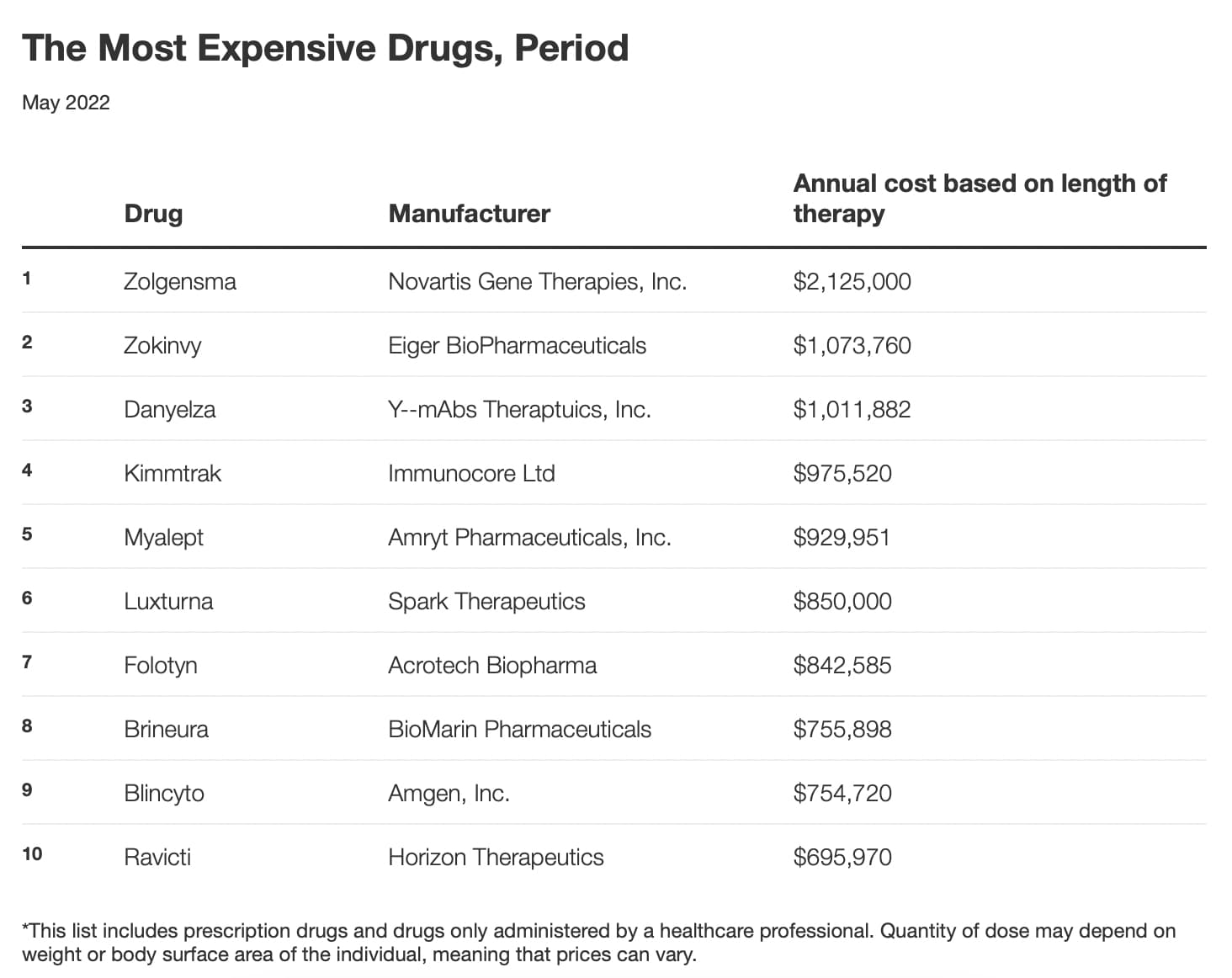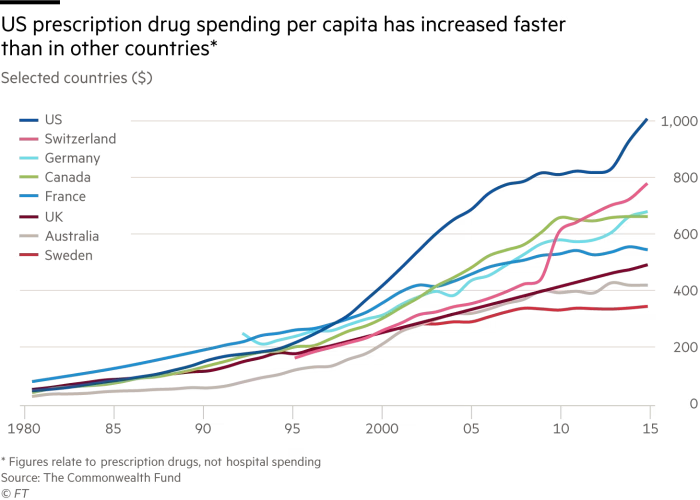I agree @John_Hemming can you give some practical examples that you have found about a supplement or medication that you use in the morning and another at night that complement each other? I am truly interested in this. ![]()
I am taking a senolytic once a week, usually in the morning with other supplements. Do you think it’s better to take it at night? Pls share more information. Thnx.
I just listened to BJ’s interview with Chris Williamson. He has a politician’s way of answering the questions he wants to answer not the question actually asked.
Setting aside communication skills and marketing, Mike Lustgarten’s channel is evidently superior. He keeps everything consistent and evaluates ONE variable at a time. There’s simply no way that BJ has had time to complete that process for 100 supplements. It would take several years alone to settle on 13mg/fortnight of Rapamune!
The Man Who Spends $2 Million a Year to Look 18 Is Swapping Blood With His Father and Son
https://www.bloomberg.com/news/articles/2023-05-22/bryan-johnson-s-anti-aging-blood-transfusion-involves-dad-and-son
Unpaywalled:
It’s interesting (and obvious) that BJ’s face is heavily filtered. It’s especially noticeable if you look at the corners of his mouth where the image is blurry and a very bright light is positioned to illuminate only one side of his face. Such a huge contrast (not in BJ’s favor) with the naturally looking face of the interviewer! Also pay attention to the difference of skin texture on his neck and face.
What do you mean by “heavily filtered”? I have no idea what you mean by that statement…
A special filter is applied to create a visual effect. It’s one of the examples: TikTokers getting 'emotional' over new teenage filter
Not saying that it’s exactly the same filter, but something similar most likely. Did you notice how asymmetrical his face is especially when he smiles (not symmetrical mouth parentheses - non existent on one side and very long on the other).
Thanks - so you’re talking about a video/computer filter. I was thinking you might be talking about some sort of skin treatment.
It was a typo - wrote filler instead of filter.
I’m kinda horrified, but I can’t look away. And the thing is that I totally get it, I’d probably be doing something similar -without the tortuous procedures- if I had his resources.Watching the blood transfusion with his father and son I’m torn between moral ickiness and a feeling that what we’re seeing in realtime is the very beginning of paradigm shift in the way we view longevity. In some ways, he puts me in mind of someone like Howard Hughes, pushing aviation forward in the 1930s. Eccentric, future oriented and at the edge of the technology of his time.
He’s very quickly accumulated a ton of followers on Youtube. He’s blowing up. It looks like he’s going become the next 'longevity Guru" judging by the air time he’s getting. I’m sure he’s moving things forward and this is probably inevitable. You can guarantee that the ‘blueprint’ product lines will be starting soon, but I just think it’s still too early.
Like many, mixed feelings about this. What I do think it good about his approach and what separates him from the usual gurus is that he’s measuring everything. While taking a bucket of supplements everyday is kind of questionable and confounds analysis quite a bit, the fact that he is monitoring every type of biomarker he can find at least helps make sure that all of this is going in a net positive direction. I wish he had started small and added things one at a time, but what can I say?
I’m also intruiged because he has enough money to try some far out fringe stuff and I think that will be very interesting. Plama transfer now, but I’m sure once there are epigenetic treatments shown to be relatively safe, he might be one of the first in line.
I think Bryan Johnson is likely the model that many wealthy people will follow very soon. If his results continue to be good, as I expect they will be, and he continues to get the publicity that he’s been getting, then it will spread quickly to those who can afford it.
Like you - on the one hand this is great, as its the type of progress that we are all looking for. But it also is a perfect example of the concerns are ones I’ve written about before - in the Hevolution Foundation post I made:
People are also concerned about “unintended consequences” around longevity biotech. We see frequently that new technologies and innovations result in serious problems that were unanticipated, or ignored early on. The Internet was thought initially to level the playing field so that small businesses and individuals around the world could sell everywhere easily, but it instead greatly enabled the creation of monopolies, so companies like Amazon and Google dominate global e-commerce. Social media was developed with the goal of “building community and bringing the world closer together” but instead it frequently fosters deadly conflict and misinformation, and polarizes people with personalized information bubbles . What does society look like if the top 1% of the wealthiest have life expectancies that increase 10%, 30% or 60% faster than the life expectancy increases of the bottom 95% of the population? Prices for longevity technologies may come down over time, but the wealthy will repeatedly get the most effective and expensive therapies as they become available, so the “lifespan inequality gap” will always grow. And, of course, wealth inequality and lifespan inequality will be mutually reinforcing; the more money you have, the longer you live, the longer you live the more money you get… How long will it be before human society starts looking like that of the bee colony, where the queen bee lives 5 to 10 times longer than the worker bees ? What if longevity science identifies a technology that will allow lifespans 10X longer, but costs $10 Million in medical procedures? What if monthly $50,000 “young blood transfusions ” allowed 5X lifespan improvement? All indications are that lifespan inequality will quickly become a big problem unless specifically targeted early on.
One week later it’s on longecity and people are getting a group order together.
I have hope, though it may be unfounded hope, that aging is such a fundamental, low-level process, that interventions that target it will in the end be very straightforward and simple.
It might be extremely difficult to discover them, but I have to imagine the interventions will be closer to rapamycin or an mRNA vaccine vs the complex and labor intensive treatments we have for cancer for example.
At least I hope.
There have been many methods that have been tried in the past by rich people to no avail. I think technology evolves so fast that the average person will be able to avail themselves of it. Remember autos and computers were once only owned by the rich.
"Research in the Conboy lab has centered on enhanced rate of healing in old tissues exposed to young plasma. Their results convince them that it is not growth factors in young plasma that make the difference but rather the absence of inhibiting factors in old plasma. Simply removing blood from an older animal and replacing it with simple saline solution plus albumin was shown to enhance rates of healing (Mehdipour et al., 2020). To test this idea in humans, the Conboys have allied with Dr. Dobri Kiprov to conduct a clinical trial of blood dilution’
“How does the body know how old it is? - ScienceDirect”
Obviously, that would be fantastic if it happened. But we have dozens upon dozens of examples that it doesn’t happen… search up the most expensive medical therapies / procedures / treatments and you can see many many situations where there are great new medical solutions, that only go to a small fraction of those who need them…
Why would longevity be any different? Perhaps since aging is universal you would have more people searching for work-arounds, but many medical procedures are just very complex and costly to do and there is no workaround.
I’ll post the slides from Tony Wyss-Coray’s presentation at the Harvard Aging Symposium later - but he’s seen great results with Therapeutic Plasma Exchange and Young Blood… great improvements in all organ functioning including brain. Regular TPE is going to likely make a big difference in many aging people’s lives in the future… the optimal treatment regimen may be monthly or more frequent. At $6,000 per treatment (and the issue of being limited by the number of young blood boys you can get the blood from) suggests that it will be expensive for many years… I don’t see anyone at Longecity coming up with quick and dirty and cheap replacements any time soon…
More Examples below:
- Hemophilia B therapy costs $3.5 million per dose
- More gene therapies expected in 2023
A gene therapy considered to be the world’s most expensive drug raises questions about how to pay for it, and the federal agency overseeing Medicare and Medicaid could play a central role in ensuring patient access to potentially lifesaving medicines.
Full article: World’s Most Expensive Drug Revives Push for New Payment Models
Where are the biohacker efforts to provide low cost versions of these drugs?
The 10 Most Expensive Drugs in the US
Key takeaways:
- Zolgensma is the most expensive drug in America, with an average one-time cost of $2.1 million.
- Since September, six of the most expensive medications in the U.S. have seen a price increase.
The GoodRx Research team regularly tracks the most expensive medications filled at local pharmacies in the U.S., and drugs on that list have only gotten more expensive since we began tracking their prices. The list’s top 3 drugs — Zokinvy, Myalept, and Mavenclad — all cost over $60,000 for a typical monthly supply. However, these are the most expensive drugs filled at pharmacies, and patients self-administer them on a regular basis.
With more approvals of expensive infusions, cancer treatments, and gene therapies, we wanted to track the most expensive drugs, including those not available from a pharmacy. We call these drugs “healthcare provider-administered drugs,” because only a medical professional can administer them.
Many of the most expensive drugs are taken for an extended period of time, and costs quickly add up. This analysis ranks drugs by their annual cost for a typical course of therapy. Prices are based on the drug’s list price — which is the price that the pharmaceutical company assigns as an official price to a drug — then adjusted for the annual timeframe to create a comparable benchmark.
See full article: 10 Most Expensive Drugs in the US, Period - GoodRx
Why do you think these pricing trends of the past 30 or 40 years are going to change any time soon?
(from the Financial Times of London):
How quickly have the prices for these treatments come down in the past 10 or 20 years? How many people go without?
Top 10 Most Expensive Surgeries
Surgical interventions are the most expensive procedures. Their cost is estimated not only by the complexity of the procedure, the equipment used, etc. but also by preliminary training, postoperative rehabilitation, the work of maintenance personnel, etc. Some operations are so expensive that they can cause a small personal financial crisis, even with insurance. Only a large wallet (really big) and a bit of luck will save here. Today we are speaking about the top 10 most expensive surgeries in the world.
10 medical procedures that cost way too much
7. Open heart surgery ($324,000)
Sometimes the heart needs to undergo some operations since many factors affect its health. As they say, sometimes prevention is needed, and sometimes – repair. The range of open-heart surgery starts from installing a new artificial heart valve to working in the coronary artery to improve blood flow. The complexity and danger of the operation depend on the specific procedure. The costs depend on this, as well as on the time of preparation before and rehabilitation after surgery. And do not forget about constant monitoring by doctors.
5. Bone marrow transplant ($300,400 – $676,800)
Bone marrow transplantation is not a very complicated procedure. Depending on the donor, surgery may not even be necessary. Bone marrow can be obtained by transfusion of a patient, only intravenous access is needed. Large costs are obtained in research in the laboratory: the study of bone marrow to find a donor, its collection, testing. Another problem is the donor. If the procedure can be almost painless for the patient, then the donor will have to undergo a rather painful procedure (larger needles in the bone), moreover, this pain can remain for several weeks.
3. Heart transplant ($997,000)
A heart transplant is a surgery to remove a patient’s diseased heart and replace it with a healthy heart from a deceased donor. The danger, of course, is also very high. As in the case of the lungs, we need equipment that will temporarily replace the heart and pump blood through the body. Long preparation, rehabilitation, medications – all this makes the operation very expensive.
2. Transplantation of the “Heart-lungs” complex ($1,148,400)
A heart/lung transplant separately is a very risky operation, and a complex transplant doubles the danger. The main expenses (except for donor organs) are hospital expenses, diagnostics, and laboratory tests. After the operation, an active and complex rehabilitation will be required.
There are many articles describing many patients who changed as individuals after a heart transplant, becoming more like those who owned a new heart than themselves. Some people believe in a soul that lives in your heart, others consider it fiction.
1. Gastrointestinal transplant ($1,206,000)
The gastrointestinal tract is the longest organ in man. The complexity of the operation is that it takes a very long time until section by section is removed. Most often, one can get onto the operating table due to intestinal cancer, a serious injury or a defect, and sometimes due to a particularly vicious infection.
The operation can take a whole day and requires long and serious care after it.
When transplanting the intestinal tract, there may be a need for a liver transplant, as it also suffers greatly due to local problems. The largest expenses (up to $800,000) can go to hospital expenses: research, preparation and postoperative care.
Source: Top 10 Most Expensive Surgeries | High Point Surgery Center Review
Longevity has 3 big things going for it in terms of cost:
- Addressable market is everyone on earth. You don’t have the problem where the entire development of a drug is divided between a small number of rare disease patients
- It’s probably not going to be treated with surgery. Surgeries are expensive due to the physical realities of the procedure and the many hands-on hours needed to complete it. Longevity interventions will likely be at the molecular or genetic level.
- Every insurance company and socialized medicine system in the world will want and maybe even insist its people get this treatment to avoid the expenses of paying for the diseases of old age which consume the vast majority of their costs. If the cost is artificially too high, many places around the world will likely just break the patents or find an alternate path to acheive the same outcome. The financial benefit of having a treatment that cuts cancer, alzheimers, and heart disease by 90% is just too big.
Lol, we all have a shelf that looks like that, right?




